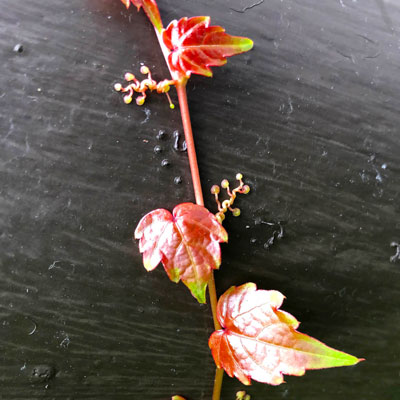Fun Facts from Horticulture
If I come across an interesting fact or factoid that deals with gardening, I’m going to report it here. I have a couple to give you this week.
From the University of Michigan…
Citing a Chinese report, the U. of M. Wolverines say that the “superglue” these little “holdfasts” provide for themselves as they secure their vines to wood, bricks, stone and siding (and my windowscreens!) can hold 260 times their own weight.

Even more surprising, they can sustain a pulling force of 2,800,000 higher than their own weight!
And I can add that they never, ever come out of those windowscreens. It’s easier just to keep Boston ivy off the windows in the first place.
From Prof. deWerth’s class at A&M…
“Plants don’t grow toward light. They grow away from darkness.”
Auxins are responsible for cell wall elongation. They are destroyed by exposure to sunlight. Therefore, on the dark side of a stem, they accumulate and function to cause those cells to grow longer than the cells on the opposite, more brightly illuminated side.

That causes the stem to “bend away from the darkness.” In doing so, it pushes the stem toward the light because the cells on the other side are shorter.
Prof. deWerth compared it to a marching band. The marchers on the outside of a curve take longer steps to go around the curve, while those on the inside are taking little baby steps.
Stalin Armijos, Agricultural Engineer (he doesn’t say where), learned it the same way that I did. Here is a link to his write-up and explanatory artwork in Quora.
